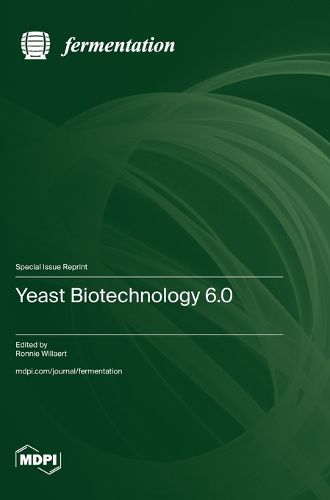Readings Newsletter
Become a Readings Member to make your shopping experience even easier.
Sign in or sign up for free!
You’re not far away from qualifying for FREE standard shipping within Australia
You’ve qualified for FREE standard shipping within Australia
The cart is loading…






This title is printed to order. This book may have been self-published. If so, we cannot guarantee the quality of the content. In the main most books will have gone through the editing process however some may not. We therefore suggest that you be aware of this before ordering this book. If in doubt check either the author or publisher’s details as we are unable to accept any returns unless they are faulty. Please contact us if you have any questions.
Yeasts are truly fascinating microorganisms. Due to their diverse and dynamic activities, they have been used to produce many interesting products, such as beer, wine, bread, biofuels, and biopharmaceuticals. Saccharomyces cerevisiae (bakers' yeast) is likely the most human-exploited yeast species. Saccharomyces is a popular choice for industrial applications, and its use in beer production dates back to at least the 6th millennium BC. Bakers' yeast represents a cornerstone of modern biotechnology, enabling the development of efficient production processes for antibiotics, biopharmaceuticals, technical enzymes, and ethanol and biofuels. Today, more diverse yeast species are being explored for industrial applications, e.g., the Saccharomyces cerevisiae, S. cerevisiae bayanus, Pichia pastoris (Komagataella phaffii), Saccharomycopsis fermentans, Wickerhamomyces anomalus, and Candida species. This instalment - "Yeast Biotechnology 6.0" - continues the "Yeast Biotechnology" Special Issue series of the MDPI journal Fermentation. This issue highlights the current prominent research directions in the fields of yeasts as a cell factory, yeast nanobiotechnology, wine yeasts and wine fermentation, yeasts and food fermentation, and biocontainment for yeast biotechnology.
$9.00 standard shipping within Australia
FREE standard shipping within Australia for orders over $100.00
Express & International shipping calculated at checkout
This title is printed to order. This book may have been self-published. If so, we cannot guarantee the quality of the content. In the main most books will have gone through the editing process however some may not. We therefore suggest that you be aware of this before ordering this book. If in doubt check either the author or publisher’s details as we are unable to accept any returns unless they are faulty. Please contact us if you have any questions.
Yeasts are truly fascinating microorganisms. Due to their diverse and dynamic activities, they have been used to produce many interesting products, such as beer, wine, bread, biofuels, and biopharmaceuticals. Saccharomyces cerevisiae (bakers' yeast) is likely the most human-exploited yeast species. Saccharomyces is a popular choice for industrial applications, and its use in beer production dates back to at least the 6th millennium BC. Bakers' yeast represents a cornerstone of modern biotechnology, enabling the development of efficient production processes for antibiotics, biopharmaceuticals, technical enzymes, and ethanol and biofuels. Today, more diverse yeast species are being explored for industrial applications, e.g., the Saccharomyces cerevisiae, S. cerevisiae bayanus, Pichia pastoris (Komagataella phaffii), Saccharomycopsis fermentans, Wickerhamomyces anomalus, and Candida species. This instalment - "Yeast Biotechnology 6.0" - continues the "Yeast Biotechnology" Special Issue series of the MDPI journal Fermentation. This issue highlights the current prominent research directions in the fields of yeasts as a cell factory, yeast nanobiotechnology, wine yeasts and wine fermentation, yeasts and food fermentation, and biocontainment for yeast biotechnology.